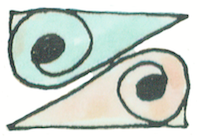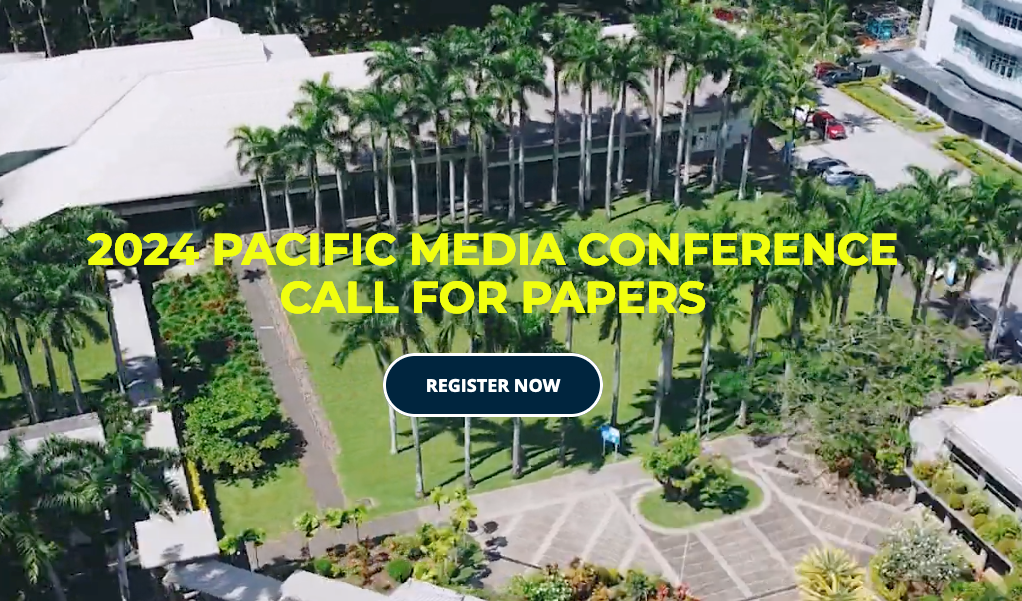Media plurality, independence and Talanoa: An alternative Pacific journalism education model
Abstract
The shrinking mainstream media plurality in Aotearoa New Zealand provides a context for examining publication of campus-based media where student and faculty editorial staff have successfully established an independent Asia-Pacific digital and print press over the past two decades. New Zealand’s largest city Tāmaki Makaurau (Auckland) has the largest urban population of Pacific Islanders globally—more than 300,000 people in a total of 1.7 million (Pasifika New Zealand, n.d.), earning the moniker ‘Polynesian capital of the world’. The presenter has had a pioneering role with four university-based journalism publications in the Pacific region as key adviser/publisher in Papua New Guinea (Uni Tavur, 1993-1998); Fiji (Wansolwara, 1998-2002); and Aotearoa/New Zealand (Pacific Scoop, 2009-2015; Asia Pacific Report, 2016 onwards), and also with two journalism school-based publications in Australia (Reportage, 1996, and The Junction, 2018-2020) (Robie, 2018). In early 2021, he was co-founder of the Asia Pacific Media Network | Te Koakoa Incorporated which has emerged as a collective umbrella for academics, student journalists and independent reporters producing innovative publications, including the research journal Pacific Journalism Review and a strengthened Asia Pacific Report, which draw on a cross-disciplinary range of media contributors and scholars in other professions. These contributors are mindful of the challenges of reportage about the UN Sustainable Development Goals (SDGs). This article explores an independent journalism model drawing on professional outlets for Asia-Pacific students and how an investigative and storytelling model like ‘Talanoa Journalism’ can be an effective bridge to alternative media careers and addressing ‘blind spots’ in legacy news media.
Downloads
Metrics
References
'2000 Fijian Coup d’État (n.d.). Wikipedia. https://en.wikipedia.org/wiki/2000_Fijian_coup_d%27%C3%A9tat
About the Pacific Media Centre. (n.d.). Pacific Media Centre Archive. https://pmcarchive.aut.ac.nz/content/about-pacific-media-centre.html
Ali, N. (2000, May 24). ‘The day I was kissed by a coup leader’. Pacific Scoop. https://www.scoop.co.nz/stories/WO0005/S00127/the-day-i-was-kissed-by-a-coup-leader.htm
Asia Pacific Journalism projects and internships. (2017). Pacific Media Centre. https://pmcarchive.aut.ac.nz/projects/asia-pacific-journalism-projects-and-internships-2019-4588.html
Bearing Witness 2019: Banabans of Rabi – a story of survival. (2019). Director: Blessen Tom, Reporter: Hele Ikimotu. [Documentary]. https://youtu.be/ZUWXXpMoxDQ
Cass, P. (2010). Baptism of fire: How journalism students from the University of the South Pacific covered the Speight putsch and its aftermath. The Round Table, 91(366), 559-574. https://doi.org/10.1080/0035853022000012586 DOI: https://doi.org/10.1080/0035853022000012586
CIRI – Creative Industries Research Institute. (n.d.). Tuwhera Open Access. https://openrepository.aut.ac.nz/collections/d9b48fd9-020d-46f6-b480-bf9ce95f6a95
CPJ. (2000, July 19). CPJ condemns violence against journalists in Fiji. [Media Release]. Committee to Protect Journalists.
Dixit, K. (1997). Dateline earth: Journalism as if the planet mattered. Pasig, Philippines: Inter Press Service
Field, M., Baba, T., & Nabobo-Baba, U. (2005). Speight of violence: Inside Fiji’s 2000 coup. Auckland, NZ: Reed Books.
Freire, P. (1997). The pedagogy of the oppressed. Continuum. DOI: https://doi.org/10.1007/978-1-349-25349-4_25
Henshall, P. & Ingram, D. (1991). The news manual. [Volumes 1 Basic techniques, 2. Advanced reporting, and 3. Ethics and the law]. Port Moresby, PNG; Sydney, NSW; and Manchester, UK: Poroman Press.
Johnson, A. & Ali, O. (2024, January 9). Coverage of Gaza war in the New York Times and other major newspapers heavily favored Israel, analysis shows, The Intercept. https://theintercept.com/2024/01/09/newspapers-israel-palestine-bias-new-york-times/
MacDonald, A. (2024, March 7). War on Gaza: UK news chiefs admit ‘mistakes’ but defend Gaza reporting, Middle East Eye. https://www.middleeasteye.net/news/war-gaza-bbc-news-chief-reporting-defend
Nash, C. (2000, June 13). Letter by the director of the Australian Centre for Independent Journalism (ACIJ) to the USP vice-chancellor.
Ofotalau, A. (2000, May 29). The ‘Close-Up’ Fiji TV script blamed for the raid. Pacific Scoop. https://www.scoop.co.nz/stories/WO0006/S00001/the-close-up-fiji-tv-script-blamed-for-the-raid.htm
Pacific Media Centre Archive (2023). Pacific Media Centre, Auckland University of Technology. https://pmcarchive.aut.ac.nz/
Pacific Media Centre Sound Cloud Channel. (2016). [Podcasts]. https://soundcloud.com/user-688507213
Pacific Media Centre YouTube Channel. (2008). ‘50/50’ journalism with Robert Fisk. [Video]. https://youtu.be/Bgpx1STOblw
Pearson, M. (2001, February 1). Ossies recognise promising journalism talent of the future. PANPA Bulletin.
Prasad, B. (2000a). Letter to USP vice-chancellor, July 27.
Prasad, B. (2000b). ‘Crisis of conscience’. Keynote address to the annual conference of the NZ Association of University Staff, Wellington, December 4-5.
Ransom, S. (2000). Young and brave: In Pacific island paradise, journalism students cover a strange coup attempt for course credit. IPI Global Journalist. https://www.academia.edu/8738183/Young_and_Brave_In_Pacific_island_paradise_journalism_students_cover_a_strange_coup_attempt_for_course_credit
Refworld. (2001). US Department of State Country Report on Human Rights Practices 2000 – Fiji. https://www.refworld.org/reference/annualreport/usdos/2001/en/25865
Robie, D. (Ed.). (1995a). Nius bilong Pasifik: Mass media in the Pacific. Port Moresby: University of Papua New Guinea Press.
Robie, D. (1995b). Uni Tavur: The evolution of a student press. Australian Journalism Review, 17(2), 95-101. https://doi.org/10.3316/ielapa.980100573 DOI: https://doi.org/10.24135/pjr.v3i2.591
Robie, D. (Ed.) (2001a). The Pacific journalist: A practical guide. Suva: University of the South Pacific Book Centre.
Robie, D. (2001b). Frontline reporters: A students’ internet coup: Coverage of crises 6. Pacific Journalism Review : Te Koakoa, 7(1), 47-56. https://doi.org/10.24135/pjr.v7i1.702 DOI: https://doi.org/10.24135/pjr.v7i1.702
Robie, D. (2004a). Mekim nius: South Pacific media, politics and education. Suva, Fiji: University of the South Pacific Book Centre.
Robie, D. (2004b). Ross Stevens and Uni Tavur: A Kiwi publishing legacy among wantoks. Pacific Journalism Review : Te Koakoa, 10(2), 153-170. https://doi.org/10.24135/pjr.v10i2.811 DOI: https://doi.org/10.24135/pjr.v10i2.811
Robie, D. (2013). The talanoa and the tribal paradigm: Reflections on cross-cultural reporting in the Pacific. Australian Journalism Review, 35(1), 43-58. https://doi.org/10.3316/informit.505272837623485
Robie, D. (2014). Don’t spoil my beautiful face: Media, mayhem and human rights in the Pacific. Auckland: Little Island Press.
Robie, D. (2016). Pacific Media Watch: Beyond parochial news. Media Asia, 41(3), 220-226. https://doi.org/10.1080/01296612.2014.11690019 DOI: https://doi.org/10.1080/01296612.2014.11690019
Robie, D. (2018). Asia Pacific Report: A New Zealand nonprofit journalism model for campus-based social justice media. Ikat: The Indonesian Journal of Southeast Asian Studies, 2(1), 119-146. https://doi.org/10.22146/ikat.v2i1.37395 DOI: https://doi.org/10.22146/ikat.v2i1.37395
Robie, D. (2019). Karoronga, kele’a, talanoa, tapoetethakot and va: expanding millennial notions of a ‘Pacific way’ journalism education and media research culture, Media Asia, 46(1-2), 1-17. https://doi.org/10.1080/01296612.2019.1601409 DOI: https://doi.org/10.1080/01296612.2019.1601409
Robie, D. (2022) Media and academia: the intriguing case of the Pacific Media Center, Media Asia, 50(2), 286-298. https://doi.org/10.1080/01296612.2022.2118802 DOI: https://doi.org/10.1080/01296612.2022.2118802
Robie, D. (2023). Voice of the voiceless : The Pacific Media Centre as a case study of academic and research advocacy and activism. Okinawan Journal of Island Studies, 4(2), 27-52. https://doi.org/10.24564/0002019736 DOI: https://doi.org/10.24135/pjr.v29i1and2.1283
Robie, D. (2024). From tok pisin to talanoa: How intercultural communication influences Pacific media models. In the Handbook of intercultural communication (forthcoming). London, UK: Sage.
Robie, D., & Marbrook, J. (2020). Bearing witness: A Pacific climate crisis documentary and journalism development project. Asia Pacific Media Educator, 30(1), 77-91. https://doi.org/10.1177/1326365X20945417 DOI: https://doi.org/10.1177/1326365X20945417
Singh, S. (2020). Pacific islanders’ talanoa point values and public support point the way forward. In A. Gulyas & D. Baines (Eds.), The Routledge companion to local media and journalism (pp. ). Routledge, UK: https://doi.org/10.4324/9781351239943 DOI: https://doi.org/10.4324/9781351239943-53
Solofa, E. (2000). Letter to the Journalism Coordinator, June 22.
The Junction. (2018). Auckland University of Technology. https://junctionjournalism.com/staff_name/auckland-university-of-technology/
The Pacific archives. (2023). The Junction. https://junctionjournalism.com/2023/10/08/the-pacific-archives/
The Southern Cross. (2017). Radio 95bFM [Podcasts]. https://95bfm.com/bcasts/the-southern-cross/1393
The Sustainable Development Goals. (2016). The 17 goals. UN Department of Economic and Social Affairs. https://sdgs.un.org/goals
Wansolwara (2023). The University of the South Pacific. https://www.usp.ac.fj/wansolwaranews/wansolwara-publications/

Copyright (c) 2024 David Robie

This work is licensed under a Creative Commons Attribution-NonCommercial 4.0 International License.















